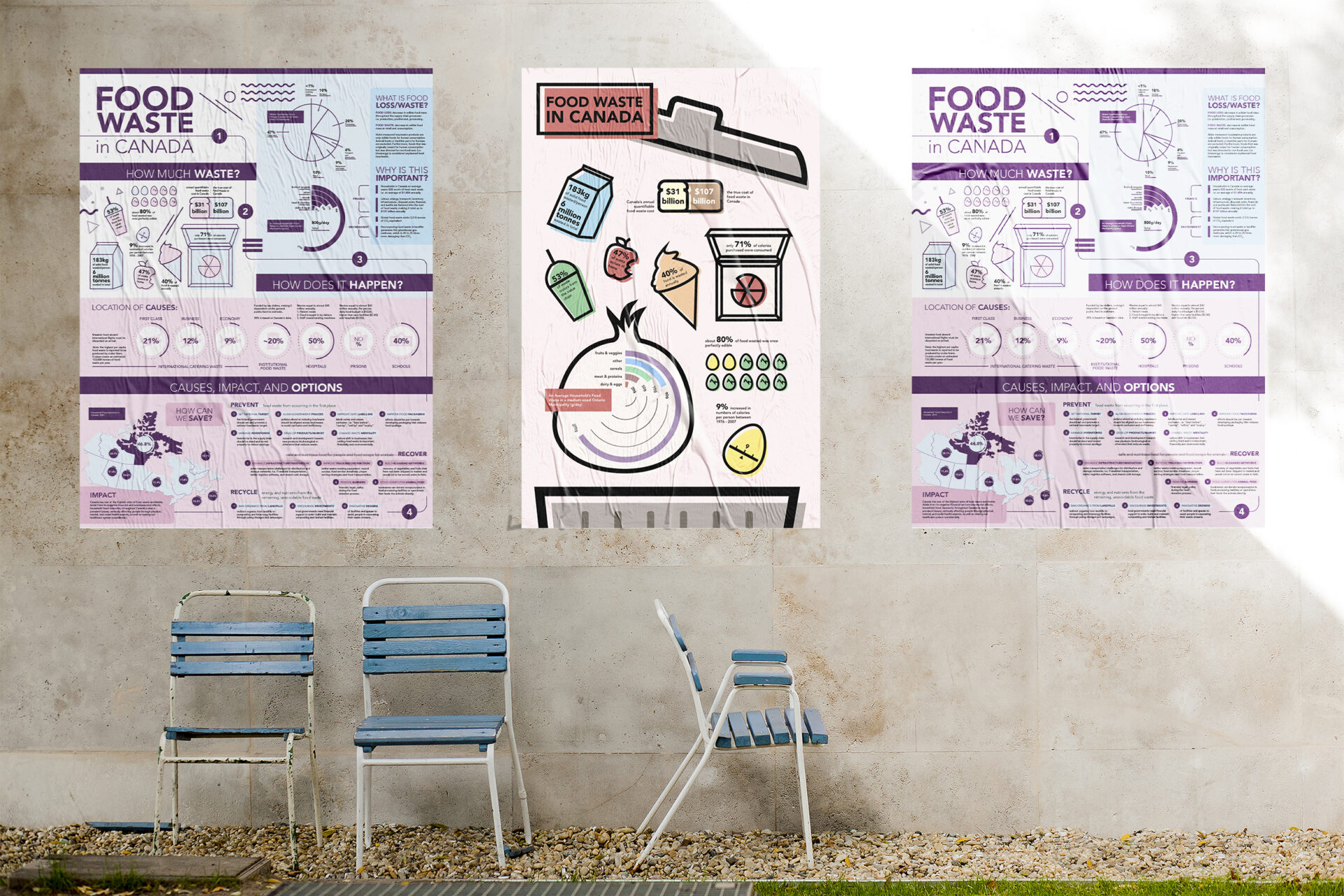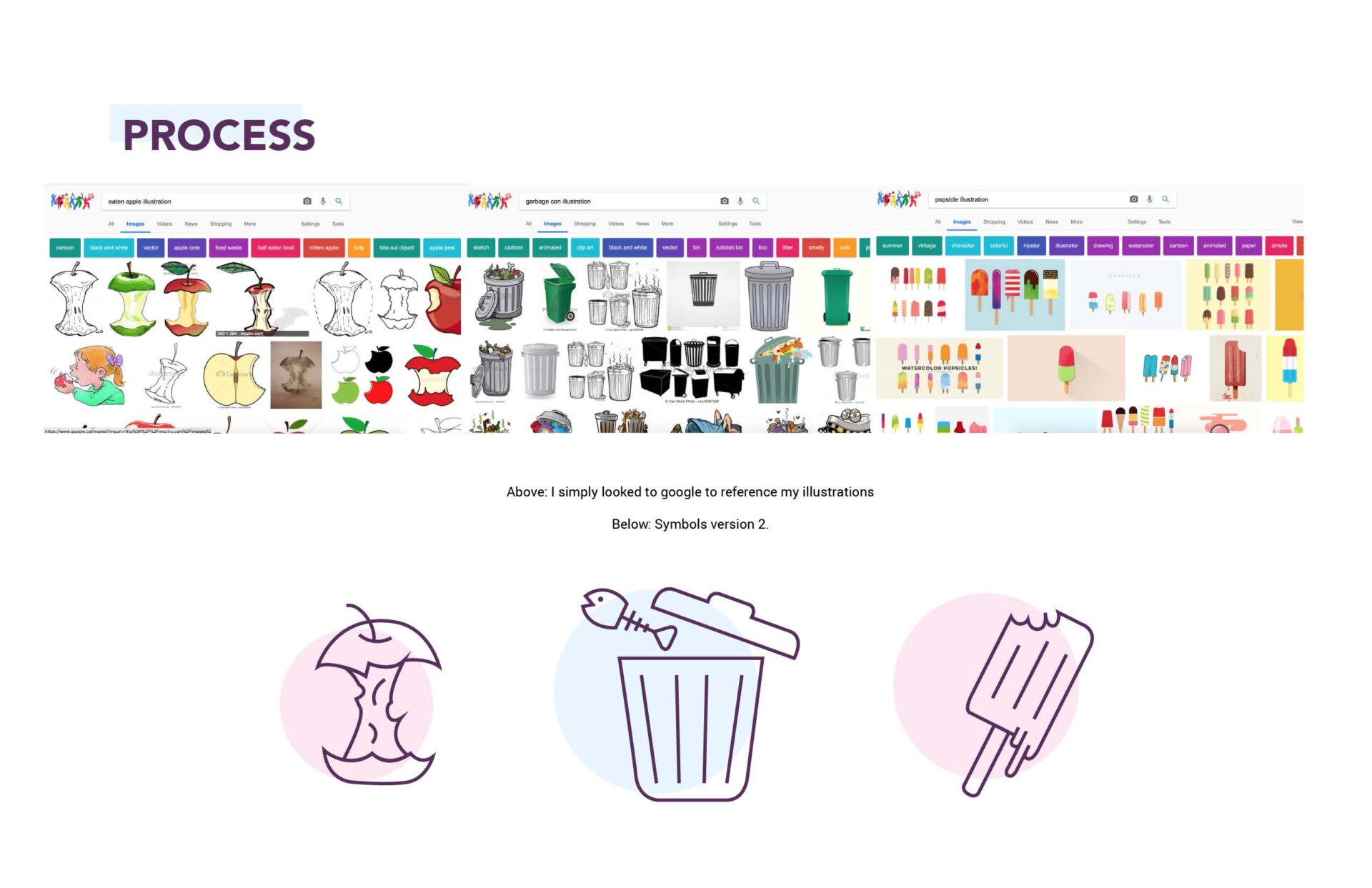
Food Waste
An infographic breaking down how much food is wasted in Canada annually as well as its causes, impacts, and possible solutions.
ROLE
Ideation, Research
Layout & Design
TOOLS
Illustrator
CATEGORY
Infographic, Data Visualization

Problem
Food waste is a serious problem within Canada as well as globally. Aside from food, this dilemma also wastes billions of dollars annually. It is a topic that affects the economy, environment, and society as a whole. According to the website of Toronto, "Some food waste, such as bones, eggshells, tea bags, fruit cores and peels, is unavoidable. However, over 50 per cent of food wasted in Toronto single-family households is avoidable, including leftovers and untouched food that could have been eaten at one point."
There could be many reasons as to why food is wasted. A few examples include:
tracks your productivity progress and provides insight
offers a wide variety of ambience settings to get you into a productive mood
keeps distractions to a minimum by blocking apps (i.e. social media)
limits interactions with the UMO app through simplistic system design
Solution
An average Canadian household suffer a loss of over $1,100 per year due to food waste. Furthermore, resources used to grow, produce, and distribute also contributes a significant amount of carbon footprint—equivalent to 9.8 million tonnes of CO2. In this infographic, I outline how much is wasted, how it happens, its impact as well as solutions.
*Disclaimer: This infographic was made in 2018 when the number of available resources were limited. Current information and numbers might differ. Please refer to the Love Food Hate Waste campaign, a partnership between the City of Toronto and the National Zero Waste Council.

Through a unique lens filled with fantastical oddity, wonderment, and just a hint of darkness, I study and comment on socio-political issues in my design.
© 2024 Ngoc Dao.




